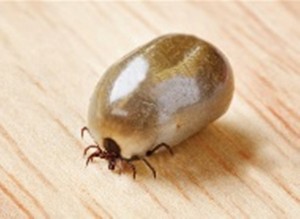Keep your pet comfortable this Winter
By John Morgan | Dated May 12, 2025 | 0 Comments
Can you believe it’s al […]
By Scott Lackenby | Dated September 17, 2014
PET OWNERS BEWARE!! ![Helen-Photo1-150x150[1]](https://gordonvet.com.au/wp-content/uploads/2014/07/Helen-Photo1-150x1501.jpg)
 Dr Helen Burns, a vet at Gordon Vet Hospital urges pet owners in the local area (Gordon, Pymble, Turramurra, Killara and St Ives) to ensure their dogs and cats are properly protected against paralysis ticks. After a period of rain and the arrival of spring, paralysis ticks are emerging in large numbers. Spring and summer is the ‘typical’ paralysis tick season, where many animals succumb to the illness.
Dr Helen Burns, a vet at Gordon Vet Hospital urges pet owners in the local area (Gordon, Pymble, Turramurra, Killara and St Ives) to ensure their dogs and cats are properly protected against paralysis ticks. After a period of rain and the arrival of spring, paralysis ticks are emerging in large numbers. Spring and summer is the ‘typical’ paralysis tick season, where many animals succumb to the illness.
Over the last couple of years however, Dr Burns and the staff at Gordon Vet have treated several cases of tick paralysis throughout winter, making them a year round threat.
“It’s becoming increasingly apparent that tick protection is a year round necessity,” said Helen. “We strongly recommend that pet owners use a product specifically aimed at killing and repelling ticks, so they do not have the chance to attach.”
Paralysis ticks are found in long grass or scrub and their natural hosts are possums, bandicoots and other native fauna. The ticks tend to attach to the head and neck region, but can be found anywhere on the body. They release a toxin during feeding and if left untreated animals can die within a matter of days. Many pets are affected without even leaving their backyard!
Dr Burns recommends treating your dog with a product such as Advantix and/or a tick collar, such as Kiltix or Scalibor. Frontline is best for cats – Advantix should never be used on cats. Most flea treatments will not kill ticks! Examining your pet daily for ticks is also important.
How to check for ticks
The best way to feel for ticks is with the tips of your fingers. An adult tick is often at least 2mm diameter. Start in the common places such as the head and neck, but search everywhere – Around the eyes and ears, under the collar, between the toes etc. Do this every day, even if your pet is on tick prevention.
Signs of Paralysis Tick Toxicity
Leg weakness, especially hind legs
Wobbly gait
Muted barking
Rapid, noisy breathing
Slow, grunting breathing
Coughing, gagging, drooling and vomiting
Less apparent signs include lethargy and loss of appetite.
If your pet has a tick, or shows signs of tick paralysis, please contact us immediately for medical advice and treatment. Once signs of paralysis tick toxicity appear, dogs and cats can become ill very quickly. The earlier the treatment, the better the chance of survival for your pet.
Please call us anytime on 9498 3000 for advice on tick prevention or if you are concerned.